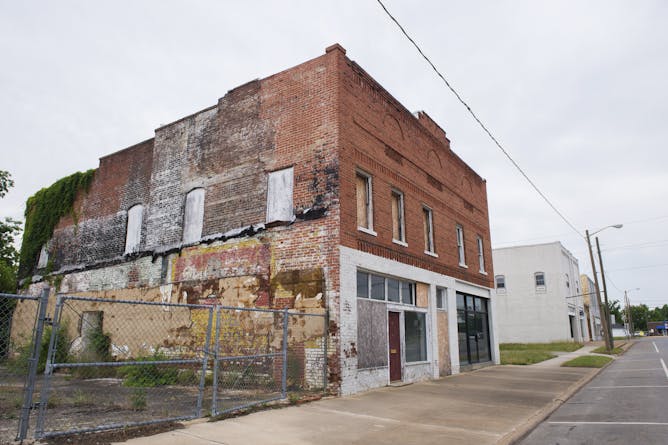|
Top headlines
Lead story
The American South has long lagged behind the rest of the U.S. economy, but the decades after World War II were a time for playing catch-up. In 1950, per-capita income in the South was just 75% of the national level − a figure that rose to 80% by the mid-1960s, more than 85% by 1970 and almost 90% in the early 1980s.
And there it stayed, hardly budging, for decades. Today, the average Southerner still earns less than the average American. What gives? Economic historians Peter Coclanis and Louis Kyriakoudes explain what happened, looking at the region’s rural manufacturing communities as a bellwether.
[ Science from the scientists themselves. Sign up for our weekly science email newsletter. ]
|

About 20% of counties in the South are marked by “persistent poverty.”
Boogich/iStock/Getty Images Plus
Peter A. Coclanis, University of North Carolina at Chapel Hill; Louis M. Kyriakoudes, Middle Tennessee State University
After a 20th-century manufacturing boom, the region has been in a decadeslong decline. Rural factory towns can blame technology and globalization for their woes.
|
Arts + Culture
|
-
Timothy J. Moore, Arts & Sciences at Washington University in St. Louis
The use of music in theater goes back to ancient Greece, and its popularity has grown to the modern-day productions of ‘Hamilton.’
|
|
Environment + Energy
|
-
Erin L. Meyer-Gutbrod, University of South Carolina; Douglas Nowacek, Duke University; Eileen E. Hofmann, Old Dominion University; Josh Kohut, Rutgers University
A recent study focusing on how offshore wind farms in Massachusetts waters could affect endangered right whales does not call for slowing the projects, but says monitoring will be critical.
|
|
Politics + Society
|
-
Matt Williams, The Conversation
Scholars writing for The Conversation take a deeper look at some of the issues expected to be on the agenda when the leaders of the world’s two biggest economies meet.
|
|
Ethics + Religion
|
-
Brandon Dean, University of Iowa
A scholar of American religion explains how a new phenomenon of Jesus images on TikTok is tapping into the prosperity gospel, a Christian belief that God will reward faith with this-worldly comforts.
|
|
Science + Technology
|
-
Ryan Keeley, University of California, Merced
The universe is expanding faster than physicists would expect. To figure out what processes underlie this fast expansion rate, some researchers are first trying to rule out what processes can’t.
-
Paul Hayne, University of Colorado Boulder
Some dark craters on the Moon are never exposed to light − ice could be hiding in these permanently shadowed regions, and India’s Chandrayaan-3 mission marked a big step toward finding it.
|
|
Health + Medicine
|
-
Michael Golding, Texas A&M University
Public health messaging has focused on the drinking habits of the mother during pregnancy. But a growing body of research shows that what dad is drinking before pregnancy matters too.
|
|